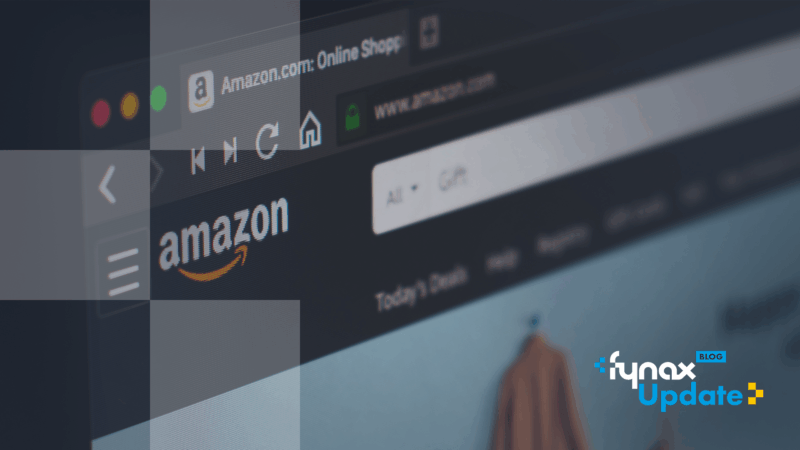E-commerce in B2B: High sales, high demands - how to align your e-business with a B2B model
Share this article
Categories

When people think of e-commerce, they usually have business models in mind that are aimed at end customers. The D2C trend in particular, where manufacturers sell directly to consumers without intermediaries, is becoming increasingly popular. Nevertheless, quite a few market assessments still see significantly greater potential for e-commerce in B2B than in B2C. One of the reasons for this is that the B2B retail sector still largely relies on old-fashioned distribution channels (such as printed catalogs). There is therefore a lot of market share to be captured in the digital segment.
The B2B sector is therefore incredibly interesting for online retailers. If you want to get started, you should know exactly which opportunities in B2B retail are still hidden and untapped. Garnished with some figures and data, you can find out in this blog to what extent this sales channel could be worthwhile for you.
What is B2B e-commerce and how is it currently developing?
In B2B, companies sell their products and services to other companies. A stationary wholesaler is just as active in the B2B sector as a small store that sells to private and commercial customers.
B2B e-commerce is a market worth trillions. One Study by IFH Cologne According to a study, the total market volume already amounted to 1.3 trillion euros in 2018. Current estimates assume that growth will accelerate significantly over the course of the 2020s.
To get a slice of this huge pie, you first need to understand how e-commerce works in the B2B sector. It's a slice of the entire world of B2B, which is becoming increasingly important.
Strictly speaking, the B2B e-commerce definition restricts the market to digital sales channels. However, there are various trading models here:
- B2B trade via your own online store
- B2B trade via marketplaces
- B2B trade via integrated procurement platforms
- Improvised sales strategies via your own website
What are the individual features of these trading platforms?
Online stores
B2B trading via your own online store promises high margins and simple order processing. However, this trading model is more suitable for fixed-priced goods and less for individual services. Although there are now technical solutions that allow customers to order customized products directly on the website, this involves a not inconsiderable investment.
Marketplaces
Many B2B retailers hope to uplift their sales by offering their products on marketplaces. A distinction must be made here between marketplaces where customers can order directly (e.g. Amazon Business) and marketplaces that only act as intermediaries and do not enable order processing.
In any case, you need to carefully weigh up whether the theoretical gain in reach can compensate for the loss in margin. General marketplaces in particular are often somewhat overestimated because visibility has to be bought at a high price with advertisements and as a retailer you are also entering into an extreme price war.
Integrated procurement platforms & EDI (Electronic Data Interchange)
In the case of regular and close cooperation with larger customers, which is quite typical for B2B trade, the provision of integrated procurement platforms is a good idea. An EDI (Electronic Data Interchange) can be used to create a link with ERP, Procurement & merchandise management systems that are in use on the customer side.
This not only allows you to standardize orders and speed up work processes. You will also achieve greatly improved customer loyalty. After all, once you have docked an integrated procurement platform and set up a smooth ordering process, you won't discard everything just because other B2B sellers are offering special conditions.
Non-automated digital sales strategies
The question of whether sales initiated via a website without a specific B2B e-commerce system are also included is somewhat unclear. Ultimately, these are sales that are made directly via the Internet but cannot be processed automatically. They therefore represent a kind of hybrid solution.
If your B2B company only has a "business card on the Internet" and does not enable direct transactions via stores, platforms or similar solutions, you should definitely think about upgrading.
What are the differences between B2B and B2C?
It is very important to be aware of exactly what differentiates B2C from B2B e-commerce. It is important to understand the needs of potential customers as well as possible, and these differ enormously between B2C and B2B:
- While the focus in B2C is on sending individual products to various buyers, orders in B2B are usually much more bundled and larger in volume.
- B2C customers show little interest in volume discounts beyond their usual requirements. In the B2B segment, on the other hand, such graduated prices are a key incentive to buy. It is also important in B2B that repeat orders can be placed easily - even with long-term planning.
- Acquiring new customers in B2C is subject to different rules and success metrics than in B2B. This starts with the fact that cold calling is not permitted in B2C, whereas it is possible to a certain extent in B2B.
- The advertising costs per new customer that B2B retailers are willing to pay are usually significantly higher. Satisfied B2B customers can generate millions in sales over the course of the collaboration, which is not to be expected from individual B2C customers.
- There are also some legal differences. A major "disadvantage" for B2C online stores is the very consumer-friendly design of the right of withdrawal for distance selling transactions. The well-known 14-day rule does not apply to commercial customers, which can be factored into the pricing.
What do you need if you want to get into B2B e-commerce?
If you want to get started in e-commerce as a B2B retailer, you don't have to have an extensive IT infrastructure ready right away. However, it is advisable to rely on systems from the outset that can be expanded later.
A website is a matter of course. But don't opt for modular systems from Jimdo, Wix & Co. because over time you will need far more functions than these B2C-oriented providers offer.
The following providers have established themselves as modularly expandable store systems that can also be adapted for B2B purposes:
- Shopware
- OXID eShop
- Magento
- Intershop
Here you can also Shopify as a SaaS solution. It should be noted that this is not software that is installed on your own server. There is therefore a platform risk here to a certain extent.
The list of enterprise store systems and explicit B2B providers is even longer:
- SAP Hybris
- IBM Websphere
- Salesforce Commerce Cloud
- OroCommerce
- IntelliShop
- Electronic Sales
- Sana Commerce
If your business model grows successfully, you can seamlessly dock the store systems mentioned to a CRM, ERP, PIM and merchandise management system. This will equip you for the future and allow you to score particularly well with orders from major customers who value integrated procurement solutions.
Conclusion: opportunities and risks are close together
B2B e-commerce offers a number of advantages, as you can not only tap into new sales potential and take advantage of marketing opportunities on the Internet, but also achieve increased customer loyalty via integrated procurement platforms and ordering systems.
One disadvantage is the setup costs. If you set up your B2B platform too laboriously and invest a lot of resources in the development of a store without first thinking about your own suitable marketing strategy, this will hinder your success.
You also need to analyze your choice of sales channels very carefully. Selling via marketplaces in particular can cost you a lot of margin. In addition, marketplaces force you into rigid categories and thus indirectly ensure that you are compared with other competitors, primarily on the basis of your prices.
Further contributions



